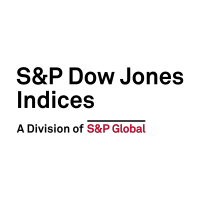Tag Archives: U.S. Equities
A Long-Term Look at S&P 500 Equal Weight Index
How have S&P 500 Equal Weight Index’s exposures informed its performance over time? S&P DJI’s Hamish Preston and Invesco’s Nick Kalivas look under the hood at the features influencing S&P 500 EWI’s risk/return and explore what its expanding ecosystem, including sectors and futures could mean for its range of potential applications moving forward.
How Sector Neutrality Influences Risk/Return in S&P Dividend Aristocrats
What are the potential benefits of a sector neutral approach to S&P Dividend Aristocrats? S&P DJI’s Rupert Watts and State Street Global Advisors’ Colin Ireland explore the construction and range of potential applications for the S&P Sector-Neutral High Yield Dividend Aristocrats.
- Categories Equities
-
Other Tags
diversification, ETFs, high yield dividend growers, indexing, large-cap equities, Mid-cap equities, quality dividend growers, Rupert Watts, S&P 1500, S&P 400, S&P 500, S&P 600, S&P Composite 1500, S&P Dividend Aristocrats, S&P Sector-Neutral High Yield Dividend Aristocrats, sector-neutrality, sectors, small-cap equities
- Categories
- Equities
- Other Tags
- diversification, ETFs, high yield dividend growers, indexing, large-cap equities, Mid-cap equities, quality dividend growers, Rupert Watts, S&P 1500, S&P 400, S&P 500, S&P 600, S&P Composite 1500, S&P Dividend Aristocrats, S&P Sector-Neutral High Yield Dividend Aristocrats, sector-neutrality, sectors, small-cap equities
Getting to Know the S&P 500 in Hong Kong
Why is the S&P 500 relevant to markets around the world? Take a closer look at this iconic index with S&P DJI’s Priscilla Luk and Hang Seng Investment Management’s Yvonne Ngai, including its role in our daily lives and some key highlights about why the S&P 500 is widely regarded as the best single gauge…
- Categories Equities, S&P 500 & DJIA
- Other Tags
Diversification, Equity & Indices
The results of S&P DJI’s latest SPIVA U.S. Scorecard are in: Most large-cap active managers underperformed the S&P 500® for the 14th consecutive year in a row. 60% of active large-cap funds underperformed the S&P 500 in 2023, slightly better than the long-term average of 64%, and a relatively benign result considering the dominance of…
U.S. Sector Relevance to China
Chinese investors tend to exhibit high exposures to domestic equities. Incorporating U.S. equities could help Chinese investors diversify their strategies and alleviate home-country bias. For example, the S&P 500® may be relevant for exposure and sensitivity to the U.S. economy. Additionally, market participants seeking to offset domestic equity biases or express tactical views may wish…
- Categories Equities
- Other Tags
Magnificent Mid Caps and Sensational Small Caps
U.S. equities rose in 2023, with the mega-cap “Magnificent Seven” driving most of the S&P Composite 1500®’s 25% gain. While mega caps continued to outperform in January 2024, not all seven of the aforementioned group ranked highly. This has led to some market commentators looking to coin new phrases: “Sensational Six” or “Super Six” (the…
- Categories Equities
- Other Tags
S&P 500 Highs Keep Coming
The S&P 500® closed at another record high today, marking the ninth all-time high closing price level so far this year. Although all-time highs are not unprecedented—2024 is the 41st year since 1957 to host a new high—a few observations stand out when looking at this year’s records. First, January 2024 saw the end of…
- Categories Equities, S&P 500 & DJIA
- Other Tags
- Categories
- Equities, S&P 500 & DJIA
- Other Tags
2023 Market Review for Asian Investors
There are potential diversification benefits for Asian investors who incorporate U.S. equities to alleviate their tendency for a home country bias. Representing nearly 60% of the global equity market, as measured by the S&P Global BMI, U.S. equities provide a larger opportunity set outside of Asia, along with potential diversification due to different economic structures…
- Categories Equities
- Other Tags
The Relative Value of Insights
Many investors use the start of the year to make predictions for the upcoming year and to think about ways to express views on these themes. This undertaking is not guaranteed to add value: predicting the future is incredibly difficult and success requires correctly predicting both the drivers of future performance and the upcoming impact…
An Elevating Effect on Equal Weight?
The trouncing of smaller caps by mega-cap stocks has been one of the hallmark market themes of this year, with the S&P 500® Top 50 outpacing the S&P SmallCap 600® by 30% YTD.1 As a result of its inherent small-cap bias, the S&P 500 Equal Weight Index (EWI) has suffered accordingly, underperforming the S&P 500…
- Categories Equities
- Other Tags
- Categories
- Equities
- Other Tags














































